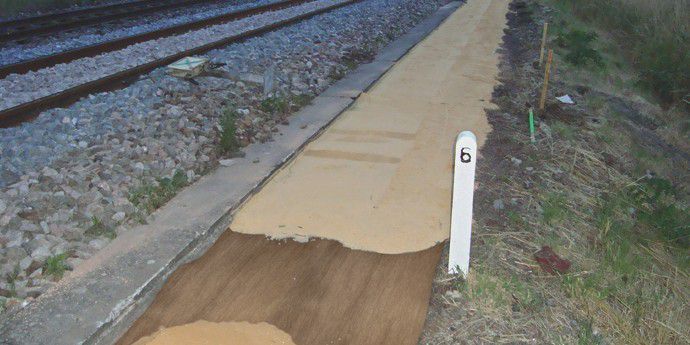DuPont, SNCF and RFF present durable, reliable and environmentally-friendly solution for protecting the ballast and preventing the growth of weeds
Case Study

In a pioneering renovation programme for a section of track in France, an innovative solution to both safety and environmental concerns has been applied, thanks to a forward-thinking collaboration between world-class science and engineering leader DuPont, rail network owner Réseau Ferré de France (RFF) and French national railway, SNCF.
The northern stretch of the line between Moret/Veneux-les-Sablons (60 km south-east of Paris) and Lyon was laid originally in 1860 and a replacement of ballast and track last took place in 1975. However, standard maintenance methods were no longer sufficient in this case, for vital reasons of safety and sustainability.
The ballast had become seriously degraded and contaminated by soil particles requiring radical renovation. Track stability was not the only issue affecting the replacement programme, however, as ecological sensitivities also demanded ‘blue-sky’ thinking. Close to Nemours, the line crosses a protected water catchment area around which the use of herbicides will soon be prohibited by law. These restrictions called for another answer to the problem of weed invasion - one that would also ensure the long-term integrity and performance of the infrastructure.
Consequently, RFF together with the Engineering Department of SNCF scouted for alternative solutions to weed control in protected areas, a challenge set to increase in the future. The search resulted in a new partnership between RFF, SNCF-IG and DuPont to develop and test the company’s non-woven fabric applications in the first large-scale installation and long-term performance trial of its kind in France. In addition to environmental benefits, the installation of weed control fabrics is the most cost-effective alternative to herbicide campaigns.
In order to minimise network traffic disruption by day an advanced multi-function track-replacement machine was brought into action by night. In a single operation, this impressive piece of engineering can lift the superstructure (tracks and sleepers, all in one go), remove the contaminated ballast and then lay down DuPont™ Typar® SF geotextile, onto which new ballast is packed before the sleepers and rails are replaced. DuPont™ Typar® SF geotextile was chosen for its proven high mechanical resistance and excellent filtration and hydraulic performance, which has already adapted beautifully to numerous railway applications around the world.
A different (but equally easy to install) product, DuPont™ Plantex® Gold, was chosen for the bordering pathways, where weed control is even more critical. These areas tend to suffer from rapid colonisation by unwanted vegetation and, traditionally, must be regularly chemically treated to safeguard the integrity of operations. Moreover, in the middle of this section of line is an area where cars and pedestrians can cross the railway under signal and barrier control. To ensure safety, a visibility clearing up to 600 metres long must be kept permanently free of vegetation in each direction…a task that is challenging to maintain and for which neither trimming nor herbicide treatment offers a lasting solution.
The answer proved to be the new weed control fabric developed by DuPont for its DuPont™ Plantex® Gold range, which was installed directly on the subsoil and covered with 2 to 3 cm of sand. "This is a promising solution to combining the protection of the environment, with maintenance cost control and risk management", said Samuel Brunet, responsible for environmental risk management at RFF.
DuPont™ Plantex® Gold offers a unique nonwoven structure of thermally bonded polypropylene filaments, which form a barrier to vegetation while allowing water to pass through. It has been successfully tested in application for more than 25 years, and its superior performance dispenses with the need for herbicides, meaning that in this environmentally sensitive area, both the quality of the catchment water and the safety of railway users and the local population will be enhanced and preserved.